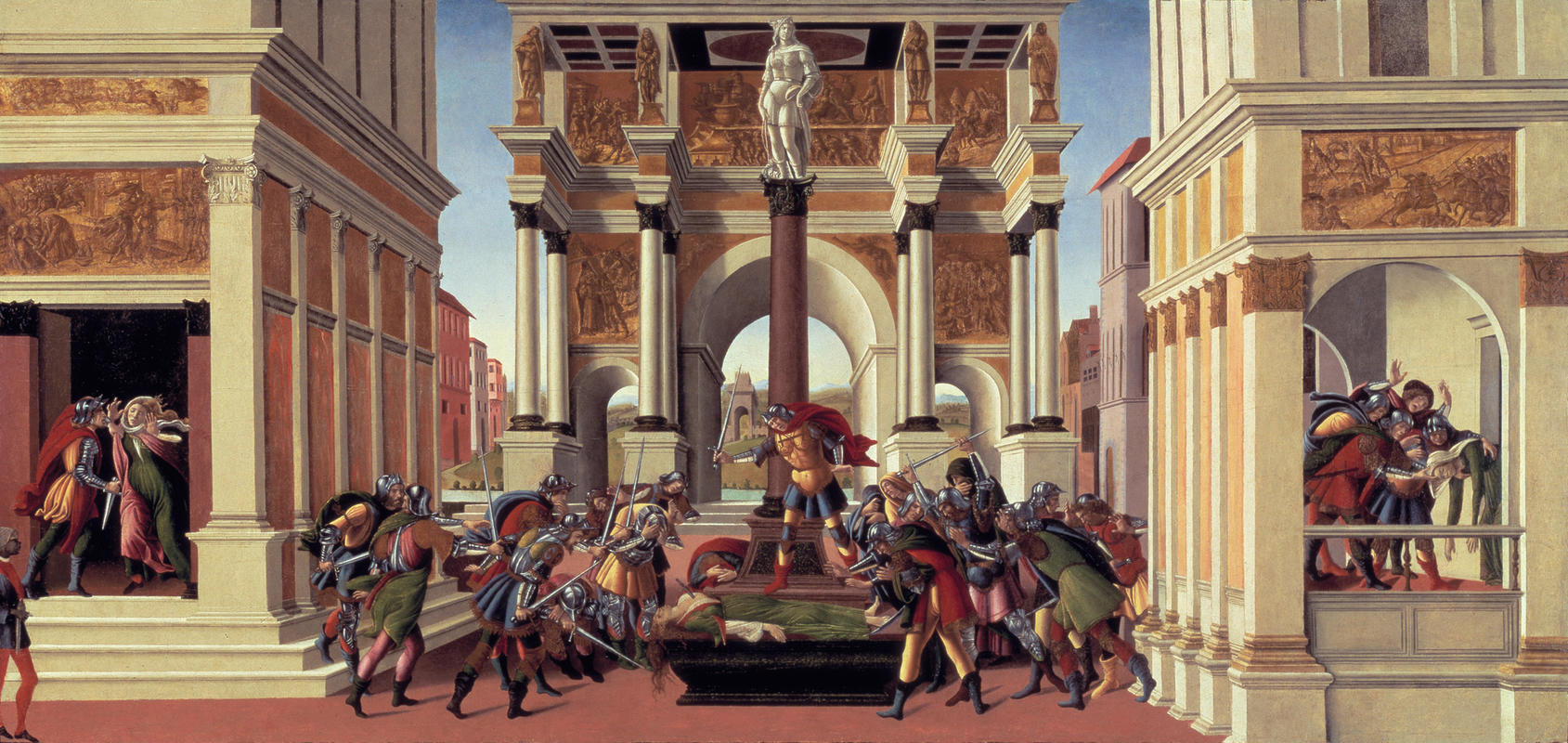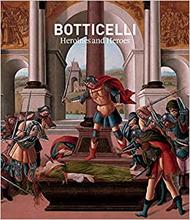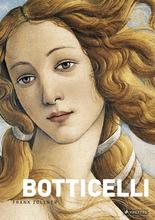More about The Story of Lucretia
- All
- Info
- Shop

Contributor
What do the suicide of a noblewoman, the rallying cry of a revolutionary, and the fall of a kingdom have in common?
They’re all featured in Botticelli’s The Tragedy of Lucretia, his first work to arrive in America. This gory tableau is unusual from the painter best known for his blonde Renaissance babes. Don’t fret— those floral robes and flowing tresses are still on display in The Birth of Venus and Primavera. But in this one Botticelli replaced angels and goddesses with armor, blood, and architecture in a grandiose denunciation of tyranny. Some speculate that The Tragedy of Lucretia was a wedding gift for a couple of Medici haters. If only modern guests were as creative with their presents. “To celebrate your holy matrimony, I commissioned you a violent painting celebrating the Roman Republic. Look, there’s a dead lady in the middle!”
Central to the painting is the death of Lucretia, a Roman noblewoman. The Roman king’s son, Sextus Tarquinius, was a royal despicable enough to rival Bloody Mary in depravity. He threatened Lucretia, making her choose between death and rape. If the prince murdered Lucretia, he intended to kill a slave as well and implicate the two of them in an adulterous relationship. When she took her own life, the enraged Lucius Junius Brutus led the rebellion that stripped the Tarquins of their power, creating the Roman Republic.
Sextus himself thought he ought to try his luck one city over, but his royal status could no longer save him. In Gabii, just a few miles from Rome, Sextus Tarquinius was assassinated by one of his abundant enemies. Remember— if you’re a hated royal, put a sea or two between you and the many victims of your treachery.
Botticelli was evidently a Brutus fan, but his passion for the republic didn’t translate well in this somewhat stiff scene. If the end result is underwhelming, it could be because Botticelli was out of his element. Ol’ Sandro was anything but sprightly at fifty-five and didn’t click well with the new oil paint fad. Despite the disappointments, The Tragedy of Lucretia is to be appreciated simply because it reminds us of Sextus’ treachery. What a scumbag.
Sources
- Foster, Benjamin Oliver, trans. Ab urbe condita. Accessed August 8, 2017. http://www.perseus.tufts.edu/hopper/text?doc=Perseus%3Atext%3A1999.02.0….
- Saltzman, Cynthia. “Botticelli Comes Ashore.” Smithsonian. August 11, 2008. Accessed August 8, 2017. http://www.smithsonianmag.com/arts-culture/botticelli-comes-ashore-7837….
- “Sextus Tarquinius.” Wikipedia. April 27, 2017. Accessed August 8, 2017. https://en.wikipedia.org/wiki/Sextus_Tarquinius.
- “The Story of Lucretia (Botticelli).” Wikipedia. August 8, 2017. Accessed August 8, 2017. https://en.wikipedia.org/wiki/The_Story_of_Lucretia_(Botticelli).
- “The Tragedy of Lucretia.” Isabella Stewart Gardner Museum. 2016. Accessed August 8, 2017. http://www.gardnermuseum.org/collection/artwork/2nd_floor/raphael_room/….
- Weisgall, Deborah. “An Elegant Flower in a Modest Garden.” New York Times. February 2, 1997. Accessed August 8, 2017. http://www.nytimes.com/1997/02/02/arts/an-elegant-flower-in-a-modest-ga….
Featured Content
Here is what Wikipedia says about The Story of Lucretia (Botticelli)
The Tragedy of Lucretia is a tempera and oil painting on a wood cassone or spalliera panel by the Italian Renaissance master Sandro Botticelli, painted between 1496 and 1504. Known less formally as the Botticelli Lucretia, it is housed in the Isabella Stewart Gardner Museum of Boston, Massachusetts, having been owned by Isabella Stewart Gardner in her lifetime.

Check out the full Wikipedia article about The Story of Lucretia (Botticelli)














